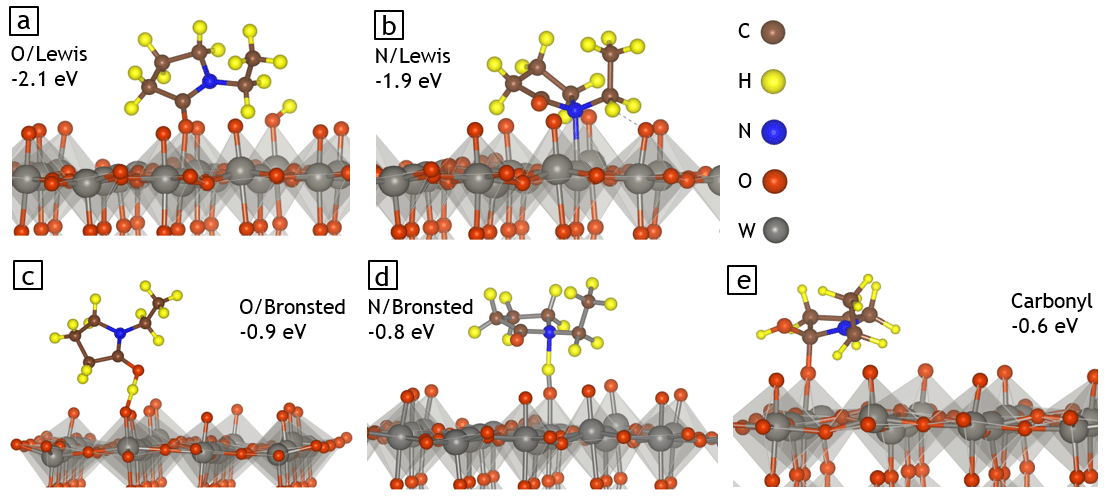51. Role of Oxygen Vacancies in Tungsten Oxide on its Photocatalytic activity
Shen et al., ACS Catalysis (2020)

Nanoscale Colocalization of Fluorogenic Probes Reveals Role of Oxygen Vacancies in the Photocatalytic Activity of Tungsten Oxide Nanowires
Meikun Shen, Tianben Ding, Steven T Hartman, Fudong Wang, Christina Krucylak,Zheyu Wang, Che Tan, Bo Yin, Rohan Mishra, Matthew D Lew, and Bryce Sadtler ACS Catalysis (2020)
Defect engineering is a strategy that has been widely used to design active semiconductor photocatalysts. However, understanding the role of defects, such as oxygen vacancies, in controlling photocatalytic activity remains a challenge. Here we report the use of chemically-triggered fluorogenic probes to study the spatial distribution of active regions in individual tungsten oxide nanowires using super-resolution fluorescence microscopy. The nanowires show significant heterogeneity along their lengths for the photocatalytic generation of hydroxyl radicals. Through quantitative, coordinate-based colocalization of multiple probe molecules activated by the same nanowires, we demonstrate that the nanoscale regions most active for the photocatalytic generation of hydroxyl radicals also possess a greater concentration of oxygen vacancies. Chemical modifications to remove or block access to surface oxygen vacancies, supported by calculations of binding energies of adsorbates to different surface sites on tungsten oxide, show how these defects control catalytic activity at both the ensemble and single-particle level. These findings reveal that clusters of oxygen vacancies activate surface-adsorbed water molecules towards photooxidation to produce hydroxyl radicals, a critical intermediate in several photocatalytic reactions.